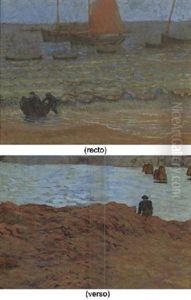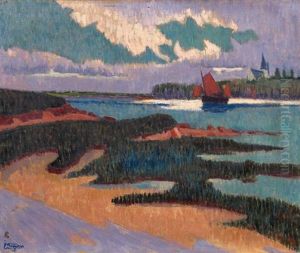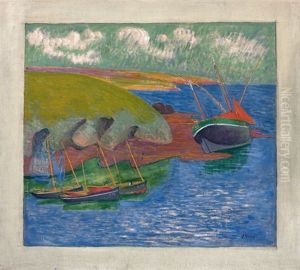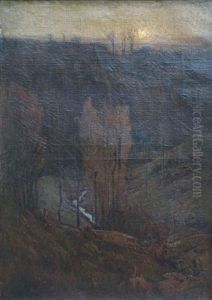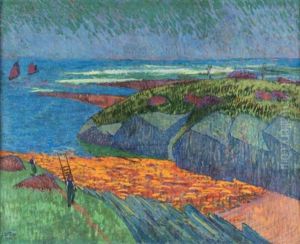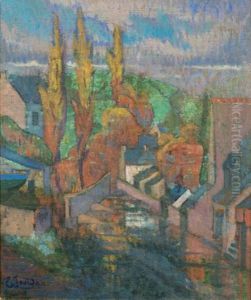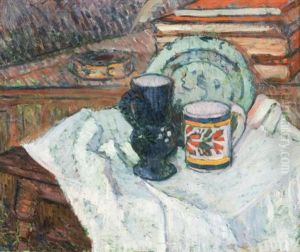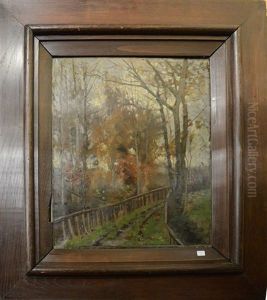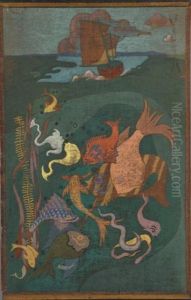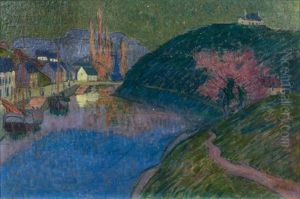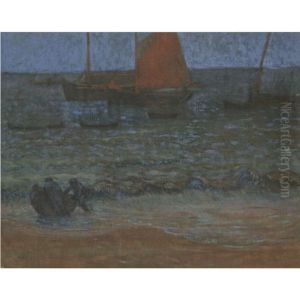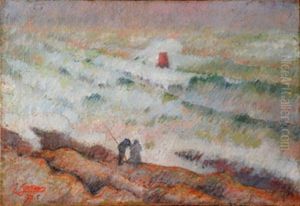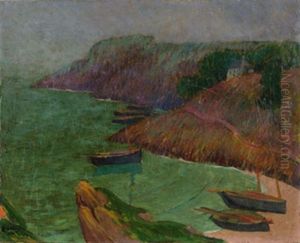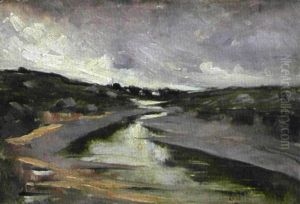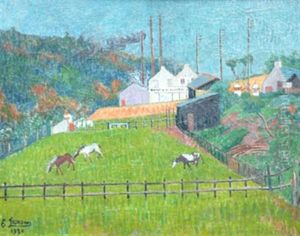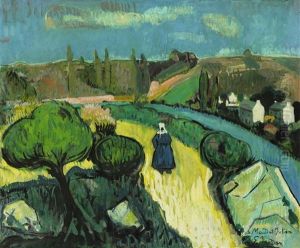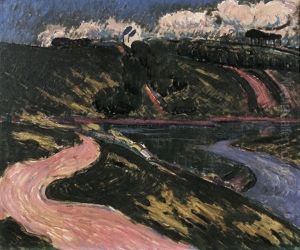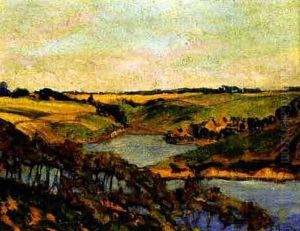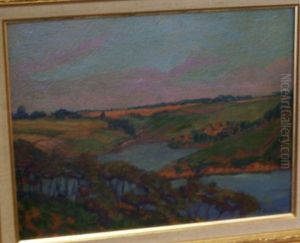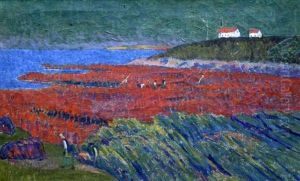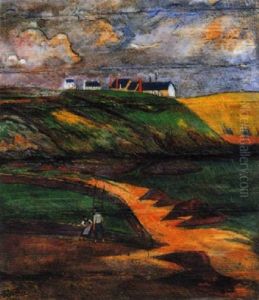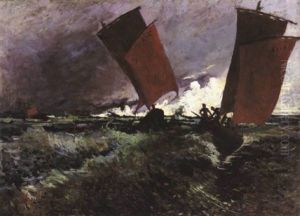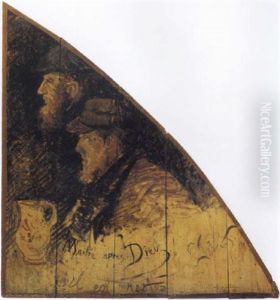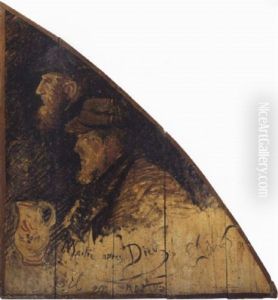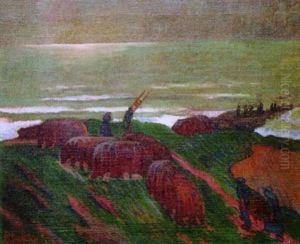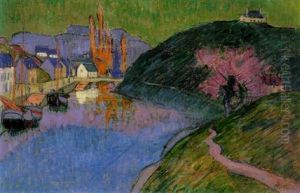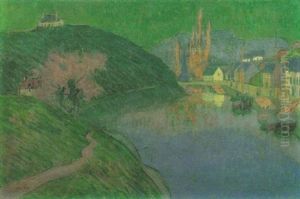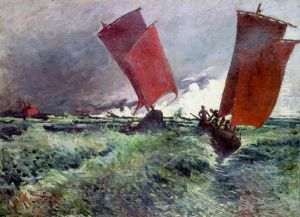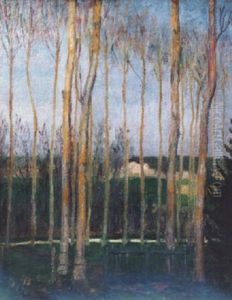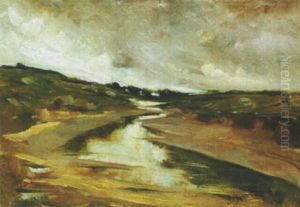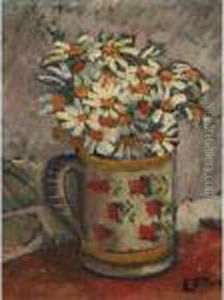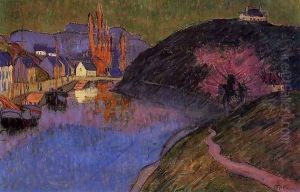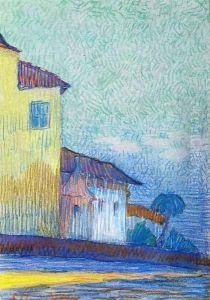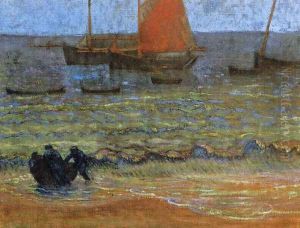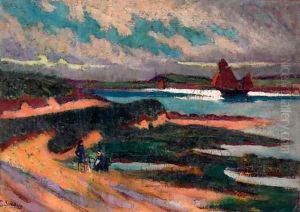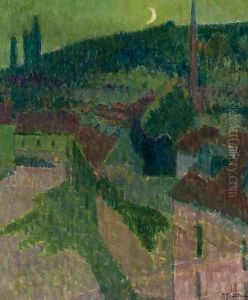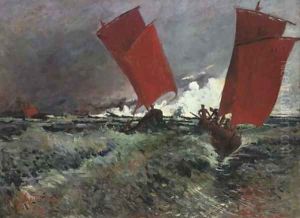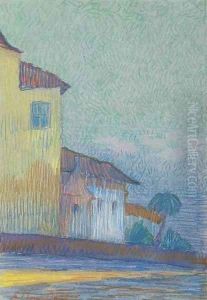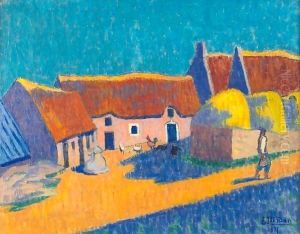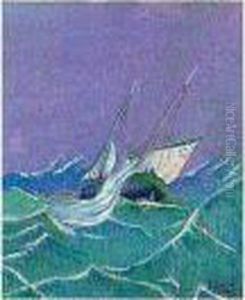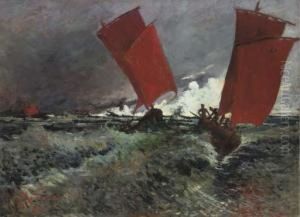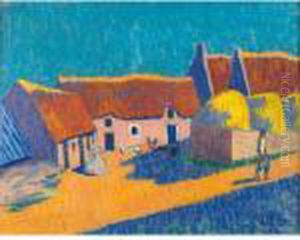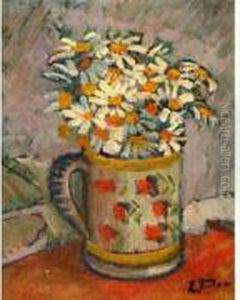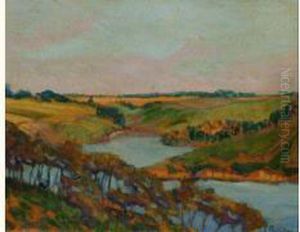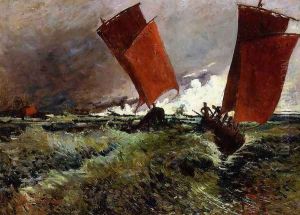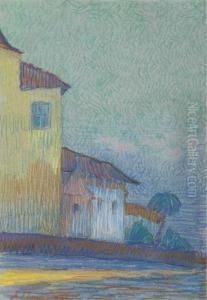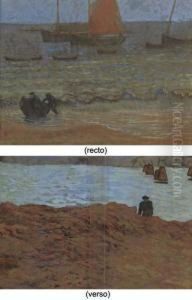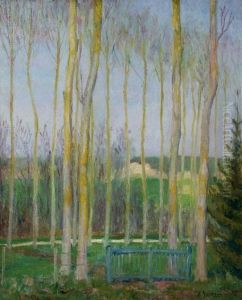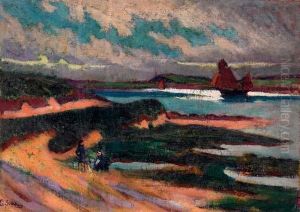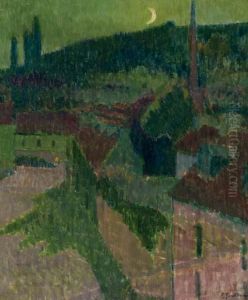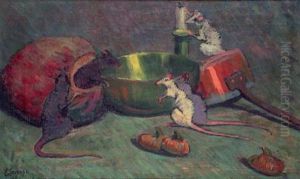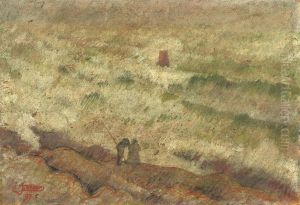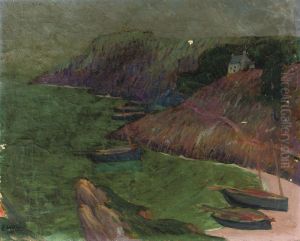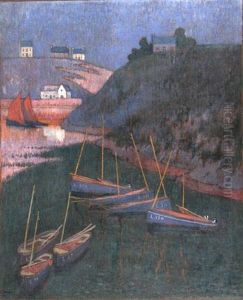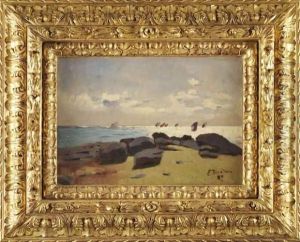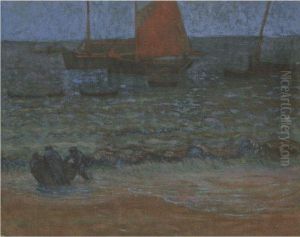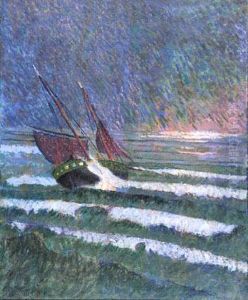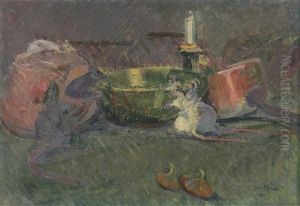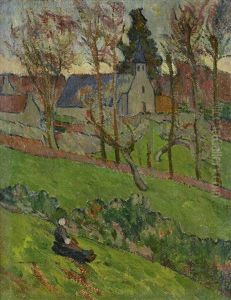Emile Jourdan Paintings
Émile Jourdan was a French Post-Impressionist painter, born in Vannes, Brittany, on June 3, 1860. He was associated with the Pont-Aven School, a group of artists that converged in the small village of Pont-Aven in Brittany, which became a significant center of artistic activity in the late 19th century. The school is best known for its association with Paul Gauguin and the synthesis of traditional French Impressionism with bold color, symbolism, and non-naturalistic styles.
Jourdan moved to Paris in the early 1880s to pursue his art education, studying at the École des Beaux-Arts under Jean-Léon Gérôme, a renowned painter and influential teacher of the time. He later settled in Pont-Aven in 1886, where he became deeply involved with the artistic community there and developed his characteristic style.
His work was marked by a harmonious blend of naturalistic depiction of the Breton landscape with the more expressive and symbolic use of color and form, typical of the Pont-Aven School. Jourdan often painted the Breton peasantry, landscapes, and seascapes, capturing the unique light and atmosphere of the region. He was known for his ability to portray the everyday life of the people in Brittany with empathy and a certain poetic realism.
Émile Jourdan exhibited his works in various salons and galleries throughout his career, though he never achieved the same level of fame as some of his contemporaries like Gauguin. Despite this, his paintings are appreciated for their contribution to the Post-Impressionist movement and their reflection of the cultural identity of Brittany.
After a long career dedicated to painting, Émile Jourdan passed away in Paris on February 19, 1931. His legacy is preserved in the regional museums of Brittany and in private collections, where his works continue to be admired for their vibrant depiction of the Breton landscape and culture.
